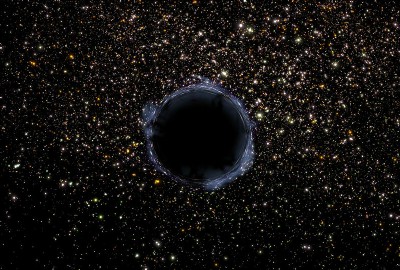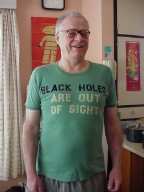
The day - should it ever come - when we know everything there is to know
about the universe will be a very sad day, because with nothing to wonder
about, and no more chance to "do science", it will be a very boring old
world.
Fortunately, it doesn't look as though this will happen any time soon.
You can download Tesla's autobiography
here.
To be fair, Tesla did receive accolades during his lifetime, much of which
coincided with the exciting romantic era, when new ideas - in both
the arts and the sciences - were having an enormous impact. His numerous
inventions, including the induction motor, the speedometer, early versions
of fluorescent lights, and the humble spark plug - as well as his
championing of AC power - were in many ways set to make the world a better
place to live.
Tesla was also one of the early researchers into radio. Indeed, in 1943, his
great contribution was recognized (posthumously) when the US Supreme Patent
Court finally acknowledged that he was the
true pioneer,
rather than his rival Marconi. To read more, visit
this
page, which also contains links to further information on the matter.
So, even though somewhat of an oddball, Tesla commanded respect - at first.
However, one of the things that may well have led to his later being
regarded as a "mad scientist" was his statement that he was receiving
messages from Mars.
Let's not get into the debate about what the signals really were that Tesla
was picking up. Instead, let's "fast forward" to 1967, some 24 years after
his death, to an incident which had my Dad eagerly following the news
broadcasts, as well as being of interest to a teenaged Mad Teddy.
By the mid-to-late 20th century,
radio astronomy
was an established science. No longer was anybody calling anyone a "mad
scientist" who was picking up signals from space. However, there were plenty
of surprises still in store.
A graduate student named
Jocelyn Bell Burnell
had found a radio source "out there" which had a definite regular pulse.
The object, whatever it was, was very sensibly dubbed a "pulsar". Nearly
four decades on, most astronomers agree that pulsars are actually
spinning
neutron stars.
To hear the noise of some pulsars as their beams sweep past the Earth, click
on
this link.
Really freaky stuff...
To read about different types of pulsars, as well as other possibly
related objects, click on
this
Wikipedia link.
In the intervening time, science has addressed many of the details about
the weird things that inhabit the universe. Most people have at least heard
of
black holes.
The intriguing properties of neutron stars and black holes have been
addressed in numerous science fiction stories since the 1970's, or even
earlier (see
this link,
and
this one,
for example); so to that extent these concepts are fairly well-known.
*
*
*
*
*
UPDATE, Saturday, 11th September 2010
Today, while doing a bit of house-cleaning, to my horror I found in the
duster cupboard my old "BLACK HOLES ARE OUT OF
SIGHT" T-shirt, which I'd had since the late 1970's. (I'd been
wondering for ages where it had got to.) You may bet I immediately rescued
it...!
I decided to try it on. (It fitted like a tight sausage-skin.) I persuaded
my wife to take a picture of me in it for this website; she agreed only on
condition that I allow her to take pics from four different perspectives
and feature them all here, for the record. Here they are (you can
click on them to see bigger versions if you really want to):
(She remarked that my head looked rather small compared to the rest of me.
I replied that that was okay, because good things often come in small
packages.)
*
*
*
*
*
- Which brings us to
quasars.
Quasars, however, are another matter altogether. If you carefully read the
excellent Wikipedia article about them (see the link above), you may feel -
as I do - that there is still a great deal of confusion about what these
peculiar beasts really are.
Quasars made their appearance in radio telescopes in the late 1950's, before
there was any news of either neutron stars or black holes . Something
"out there" was generating high-energy radio emissions; but the
nature and distance from Earth of such objects were not clear.
The term "quasar" is generated from the words "quasi stellar" - meaning
somewhat starlike, but not a star. There is more than a hint of uncertainty
inherent in the very word.
So why am I raising quasars as an issue?
A few weeks ago I bought, in a secondhand bookshop, a copy of Arthur C.
Clarke's book "Report on Planet Three and other speculations" (Pan SF, 1984,
originally published by Victor Gollancz in 1972). This book is a series of
essays on various topics in a format that appeals to the kind of person who
likes quirky ideas and/or science fiction.
One of the essays (Chapter 7 in the book), written in 1968, is entitled
"Next - the Planets!". In this essay, Clarke addresses the possibility of
space travel not only to the moon (which would happen in the following year,
1969), but also to the other planets in the solar system - and, ultimately,
to other star systems. As he says in his introduction, this was originally
presented as a paper at a conference in 1968. In the final paragraph of this
introduction, he says:
"The suggestion, at the end of the essay, that we are observing new sources
of energy which may far exceed those of the atomic nucleus now seems more
and more probable, thanks to recent researches on 'quasars'. The Universe
can provide all the power that we shall ever need to drive real star
ships - if we are clever enough to tap it..."
It seems to me that the evidence from astronomy and particle physics which I
have described makes it possible that we are on the threshold of great and
far-reaching discoveries. I have spoken of processes which, mass for mass,
would be at least a thousand times more productive of energy than nuclear
energy ... it seems to me that there are prodigious sources of energy in the
interior regions of some galaxies, and possibly in the "quasars", far
greater than those produced by the carbon cycle occurring in the stars. ...
And we may one day learn how to employ them.
As soon as I read this essay, I decided that it was necessary for me to
follow up the matter of whether there is some connection between quasars and
ZPE. So I started hunting around on the WWW to see what I could find out
about it.
This link popped up (have a look):
http://www.helical-structures.org/BSM_highlights.htm
Well, if that's piqued your interest, have a look at this one!
http://www.rense.com/general58/bbang.htm
I must say that I was delighted to find, in that page, a challenge to the
notion of "dark matter" (mentioned briefly in my earlier page on
metals)
- which has always seemed to me to be in the nature of a colossal,
obfuscating "fudge factor", with no possible justification in scientific
terms. (How can the absence of something which, by definition, is
not observable, be used to prop up any self-respecting
theory?)
On the other hand, there may be a classic irony in this: perhaps the
emergence of such a idea is, in itself, evidence for the existence of
super-massive black holes after all - between the ears of those who
subscribe to it. (Pardon me; that's a cheap shot, I know, and unworthy of me
- especially since the idea is not even original, a similar joke having been
used by
Larry Niven
in his story
"The Hole Man"
- but I couldn't resist it...
Note that the "fingers of God" link, in the "bbang" page whose link appears
above, doesn't work. However, not to worry - the URL of the article has
changed, that's all. It's now
here
- check it out!
Whew! What are we to make of that?
Here are another couple of links on this topic:
http://www.electric-cosmos.org/arp.htm
- about Halton Arp's research on redshift. The "fingers of God", featured
in the last link, are also presented here; in addition, the very existence
of neutron stars, black holes, and again (YAY!) "dark matter", is
called into question.
http://en.wikipedia.org/wiki/Halton_Arp
- a Wikipedia article about Halton Arp, which (it seems to me) attempts to
steer a "middle course" and be fair to both sides of the debate.
Okay? Now have a look at one of Dr. Arp's own web-pages and see what he has
to say about redshift, quasars, and related matters:
http://www.haltonarp.com/?Page=Abstracts&ArticleId=6
(Check out other pages on his site too, while you're about it. In
particular, have a good, hard look at
this
one.)
UPDATE, Thursday, 4th November 2010 (and long overdue!)
When I first wrote this page in mid-2006, those two links in Dr. Arp's
website did work. However, not long thereafter, some major changes were
made to that website, and those links - among others to various other
pages in the site that I'd found interesting - no longer worked.
At one point, I contacted the webmaster in an attempt to find if the pages
were perhaps still there under different URL's; but, because I hadn't noted
their original URL's (which I always do now, if I find something
interesting!), I wasn't able to provide enough information about specifics
to enable a fruitful search. I decided to leave the above links there in
the hope that they might come back at some stage; but it hasn't happened -
and at this point, over four years later, I think I have to accept the
fact that they probably never will.
HOWEVER! All is not lost. Dr. Arp's website, although radically
modified, still exists - and is still well worth a visit. What I suggest
is that you visit his home page,
http://www.haltonarp.com,
and just follow your nose. The relevant information is still there, in one
form or another.
Dr. Arp has written a book entitled
"Seeing Red: Redshifts, Cosmology and Academic Science"
(Apeiron, 1998). I found out about this book when first
researching this page, and ordered a copy from a Launceston bookshop. (The
"fingers of God" issue is discussed on page 69.)
The book isn't exactly an easy read. It's packed with technical, highly
specific astronomical information, much of which is over my head (pun
not intended). But it's not too hard to get the gist of what he's
saying, in terms of the way much of "mainstream science" conducts itself
these days.
I've just done a bit of Googling about this book. I suggest you do the
same; there's no shortage of web-pages which discuss it in one way or
another. I'd like to draw attention to one such page - a review of the
book - which is notable because of the characteristic vehemence with which
opinions are expressed therein:
http://astronomy-mall.com/Adventures.In.Deep.Space/review.htm
(In July last year I posted a page in this site entitled
Science, scientific method, and ZPE: some thoughts
in which I've had a few choice words of my own to say about the way
science is done, all too often, in these troubling times. I do hope you'll
have a look at it at some stage, along with some of my other pages on the
subject of zero-point energy, which has come to be perhaps the main thrust
of what I'm trying to convey via this website.)
I'd like to include here just one link to a page in Dr. Arp's revamped
website, which I think is well worth a read. In this article, he tells of
his experience of working with British astronomer and science-fiction
writer Fred Hoyle (1915-2001), with whom he shared an exasperation of the
way things are so often done in the scientific arena:
http://www.haltonarp.com/articles/research_with_Fred
UPDATE-WITHIN-AN-UPDATE, Friday, 11th March 2011
Bummer - now that link has disappeared!!! - along, apparently, with
Dr. Arp's entire site. Cheek of some people - how dare they have the
temerity to close their web-pages when I've taken the trouble to link to
them?
Well - look on the bright side. While searching (unsuccessfully) for a new
page which might contain that same information, I've come across
this
very interesting page. While I don't agree with the "religious" views
expressed within the website in which that page occurs, I do give the page
a cheer for referring to the work of Dr. Arp and calling into question the
existence of black holes and the historicity of the Big Bang. (I wonder how
long that link will last??!)
Come on - you've got to give old Teddy credit for at least making a
genuine attempt to stay on top of the comings-and-goings of these
links!
UPDATE-WITHIN-AN-UPDATE-WITHIN-AN-UPDATE, Tuesday, 29th March 2011
YIPPEE!!! That "research with Fred" link has come back!
"There is no adequate defense, except stupidity, against the impact of a new
idea."
Yes, I'm deliberately being provocative - just as I have been elsewhere in
these pages. But I'm not doing it just for the sake of it. I'm trying my
best to encourage people to think, because that is the only way any of us
will ever really understand anything - which, in turn, gives us the
chance to make the world a better place to live.
I believe that the true scientific minds in history - heroes like Faraday
and Tesla, among several others mentioned elsewhere in this website - would
have adopted a similar point of view.
I don't know what quasars are. I don't know if they have anything to do with
zero-point energy. I may never know. But it's nice to know that I'm not the
only person who wonders about it.
UPDATE, Thursday, 19th February 2009
A couple of months ago I bought, in a Launceston "op shop", a chemistry
textbook entitled "CHEMISTRY - AN EXPERIMENTAL SCIENCE", co-written by
several authors under the auspices of the Chemical Education Material Study
(often referred to simply as "CHEM Study"), and published by W.H. Freeman
and Company in 1963. (It cost me three dollars - how about that for good
value?!!)
It's one of those delightful textbooks that are fun to read. Although the
content is first-rate, the book doesn't take itself so seriously as to
become dry and boring. It's full of humorous, witty remarks which serve to
make the content memorable - to reinforce the main message by
"sweetening the pill" a little.
Each chapter begins with a quote from a noted scientific thinker. Chapter 2,
"A Scientific Model: The Atomic Theory", begins with the following 1689
quote from Isaac Newton:
“. . . hypotheses ought to be fitted merely to explain the
- and if that isn't one in the eye for the "dark matter" brigade, I don't
know what is!
By way of closing this page, let's allow Arthur C. Clarke to have the final
say.
In the first of those two links above which I found while hunting on the WWW
for a link between quasars and ZPE, at the end of the page are references to
two papers both by (or partly by) H.E.Puthoff.
In his book "Greetings, Carbon-Based Bipeds!" (Harper Collins Publishers,
1999), in Chapter 30: "When Will the Real Space Age Begin?", Arthur C.
Clarke refers to a paper by Dr. Hal Puthoff and colleagues in the February
1994 Physical Review which suggests that gravity and inertia are both
"functions of the vacuum or zero point energy, which pervades the whole
universe and is the real residue of the Big Bang".
In the following paragraph, Clarke writes:
Physics may be about to face a revolution similar to that which occurred
just a century ago. Don't be surprised if the fossil-fuel and nuclear age
comes to a screeching halt in the very near future.
I can't wait...
My home page
Preliminaries (Copyright, Safety)
Quasars: some thoughts...

 Nikola Tesla
(1856-1943), who is increasingly honoured by those who
understand as "the man who invented the 20th century", was a strange,
tortured man. There is no question, even among those who think his
importance may be somewhat over-exaggerated, that he was a genius. Like most
geniuses, he was (or at least appeared to be) "flawed"; being
over-endowed mentally does not sit easily in a world in which half the
population are of below average intelligence.
Nikola Tesla
(1856-1943), who is increasingly honoured by those who
understand as "the man who invented the 20th century", was a strange,
tortured man. There is no question, even among those who think his
importance may be somewhat over-exaggerated, that he was a genius. Like most
geniuses, he was (or at least appeared to be) "flawed"; being
over-endowed mentally does not sit easily in a world in which half the
population are of below average intelligence.  (People who are "special", either by being super-intelligent or sadly
lacking in that regard, frequently don't have stress-free lives, because
they don't fit in easily with society's mores.)
(People who are "special", either by being super-intelligent or sadly
lacking in that regard, frequently don't have stress-free lives, because
they don't fit in easily with society's mores.)



 Whatever are they?
Whatever are they? 
Neutron stars and black holes have a certain appeal, because of their
obviously interesting characteristics. It's not too hard to get one's head
around the concepts; people such as myself who like ideas for their own sake
enjoy the mental exercise involved in thinking about them.



Toward the end of the essay itself, as promised in the introduction, Clarke
quotes Professor C.F.Powell, a Nobel Laureate in Physics, as saying:


Now, if you've had a bit of a look around this website, you may have noticed
that a recurring theme is something called "Zero-Point Energy" (ZPE).
Indeed, there is a page devoted to this very topic (click
here
to see it).
 )
)

*
*
*
*
*
 (Or could there be an "e-black hole" on the
web somewhere which is simply swallowing all this stuff?)
(Or could there be an "e-black hole" on the
web somewhere which is simply swallowing all this stuff?)

“Look out, Mad Teddy - I'm
comin' to gitcha...”
*
*
*
*
*



properties of things and not attempt to predetermine them
except in so far as they can be an aid to experiments.”





 Return to Astronomical stuff menu
Return to Astronomical stuff menu





